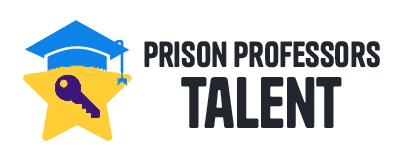Anyone going into a crisis or difficult situation should start thinking about steps they can take today that will lead to a better outcome. I had to learn those lessons at the start of my journey, and I like to share the different ways that they helped me along the way, at later stages of the journey. In Earning Freedom: Conquering a 45-Year Prison Term, I offered many examples that show the value of critical thinking skills. For example, consider the story of how I laid seeds to transfer from a high-security penitentiary to a less volatile institution.
That story offers great lessons I learned from wiser minds about critical thinking and decision-making. Influenced by Socrates’ relentless questioning of assumptions, Viktor Frankl’s emphasis on finding meaning through deliberate choices, and Frederick Douglass’ example of strategic perseverance against overwhelming odds, I began to see every decision as a crossroads—with real opportunity costs that could shape my future for years or even decades. Those leaders lived hundreds of years ago, but they taught me how to think differently, to evaluate options like a CEO plotting a company’s long-term success rather than reacting impulsively.
When I’ve written about developing the CEO mindset, I’ve always emphasized what others taught me:
- We should define the success we’re striving to build,
- We should set goals that advance the possibilities of succeeding,
- We should develop tools, tactics, and resources that accelerate our progress,
- We should measure our progress daily,
- We should adjust as necessary, and
- We should execute our plans every day.
Consider a story from my journey that illustrates this strategy, drawn from those early years inside. You may see how I applied the wisdom of others to navigate a system designed to limit options, and how that mindset opened doors I never thought possible.
I was arrested on August 11, 1987, and I spent the first year of my term in solitary confinement. While in that cell, I read books that gave me a better understanding of how successful people think. Later, after a judge sentenced me to serve 45 years, I transferred to the United States Penitentiary in Atlanta, a high-security fortress rife with violence and restrictions. The environment felt like a dead end—limited programs, constant lockdowns, and little incentive for growth. Yet even in that environment, opportunities opened for me to build relationships with mentors and work toward earning academic credentials, including my first university degree.
Over time, however, the prison grew more violent. After being there for about six years, I decided that the time had come to orchestrate a transfer to a prison that would be less volatile. It would not be easy. Coordinating a transfer from one prison to another requires many moving parts. Some people would make decisions that would influence my life, and I would never be able to meet those people face to face. That is the nature of living in a bureaucracy.
I had to architect a plan. If executed properly, that plan would get the result that I wanted.
I had to consider my strengths, weaknesses, opportunities, and threats. Fortunately, decisions I’d made during the first six years of my imprisonment had led to real assets. I had a university degree, a clean disciplinary record, and a strong support network. I could leverage those assets, or resources, to help me get the result I wanted.
Success would be to get to the right prison. Since I wouldn’t have any way of knowing where the right prison would be, I needed to develop tactics that would help me gather information. In the book, I described the path that I put in motion. It required me to:
- Collaborate with a mentor, Dr. R. Bruce McPherson, who was a professor from Chicago. I asked him to work with me so that we could publish an article in a peer-reviewed journal. By publishing that article, I hoped to influence decision makers in the Bureau of Prisons. I had read a different article by Sylvia McCollum, who led the education department at the Bureau of Prisons. She wrote about the importance of getting a GED. I asked Bruce to find a publisher who would publish an article we could write about self-directed learning and finding mentors. That article led to The Prisoner and the Professor, which described our relationship, how he was teaching me, and how our work together built upon the lessons that Sylvia McCollum wrote in her article. Bruce helped to persuade a peer-reviewed journal to publish the article.
- Once we had the article, Bruce sent it to Sylvia, at the DC headquarters of the BOP. It prompted Sylvia to reach out to Bruce and invite him to DC. She gave Bruce authority to visit any prison, to meet with the supervisor of education, and to meet with people in prison who took education seriously.
- Through that process, I got information about the opportunities for education at many different prisons. I learned that the best prison, for me, would be a prison in Northwest Pennsylvania, FCI McKean. The warden, Dennis Luther, supported education programs.
- Because McKean was in a different region, I would need to build support to coordinate the transfer. I relied upon others in my support network to assist in advocating for the change I wanted. That effort led Norval Morris, a distinguished law professor from Chicago, to advocate on my behalf with directors at the Bureau of Prisons.
- With the help from Bruce McPherson, I got the support of Sylvia McCollum. With Sylvia’s help, Bruce got permission to visit several federal prisons and get inside information from people who were serving time there. With that information, I could identify FCI McKean as the best prison for me. Once I identified the prison, I could loop in Norval Morris, an influential law professor to advocate on my behalf.
The strategy and tactics led to me getting the results I wanted. It helped me build confidence and brought meaning to my life. Instead of feeling like a prisoner, I felt as if I were architecting my pathway to success.
This story isn’t unique to prison—it’s a universal lesson. Every choice has opportunity costs: The time you spend in negativity today could be invested in skill-building for tomorrow. By thinking like the CEOs these influences modeled—strategic, forward-looking—you can leverage resources and relationships to inch closer to your goals.
To apply this to your life, try these self-directed exercises. Take time in your journal or quiet reflection to work through them:
- Identify Your Crossroads: List a current challenge (e.g., a job search, family issue, or personal habit). What are the short-term options? What opportunity costs come with each—time, energy, or missed growth? Draw from Socrates: Question your assumptions about what’s “impossible.”
- Map Long-Term Paths: Inspired by Frankl, define success 1 year, 5 years, and 10 years from now. What decisions today align with that vision? Calculate the costs of delay versus action. For example, if building a support network is key, who can you reach out to this week?
- Build and Leverage: Like Douglass gathering advocates, track one small resource you’re developing (e.g., a new skill via online courses). How can you use it to create momentum? Reflect: What relationships might it open, and what’s the cost of not pursuing them?
- Review and Adjust: At week’s end, assess your progress. What worked? What didn’t? Adjust, remembering these thinkers succeeded through iteration, not perfection.
At Prison Professors, we show the importance of developing an empowering mindset. Regardless of what challenges you’re facing today, you can make decisions and take actions that will influence more opportunities in the future.
If you’re ready to think critically and weigh those costs, start by creating your profile at prisonprofessors.org/talent. What decision will you make today to earn your version of freedom?

